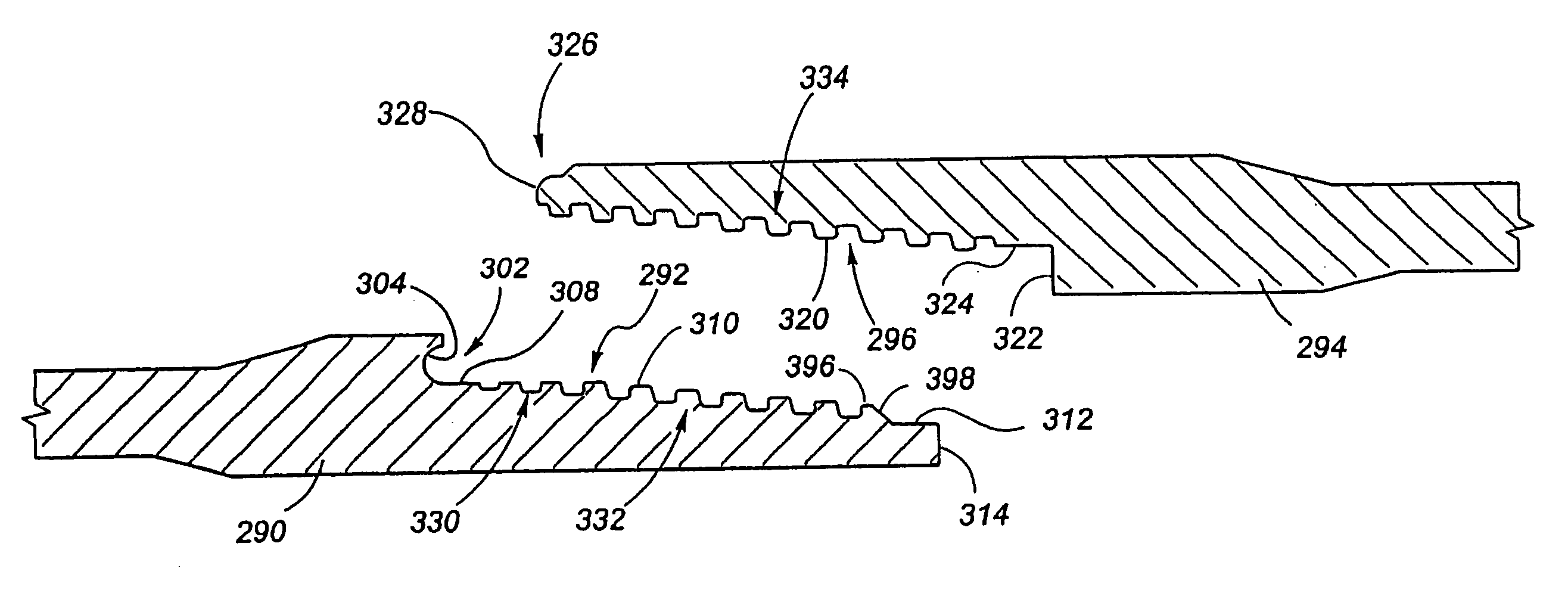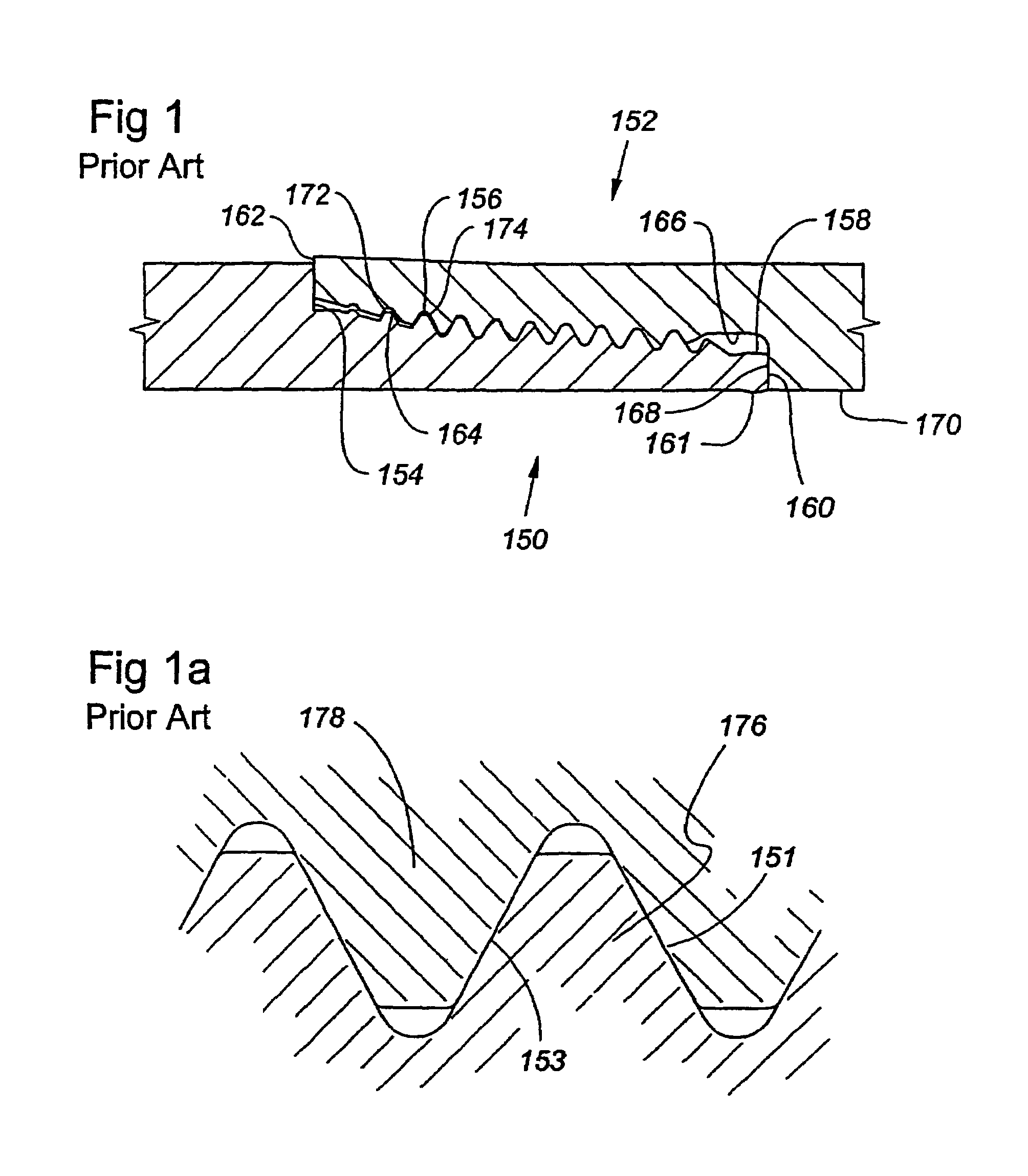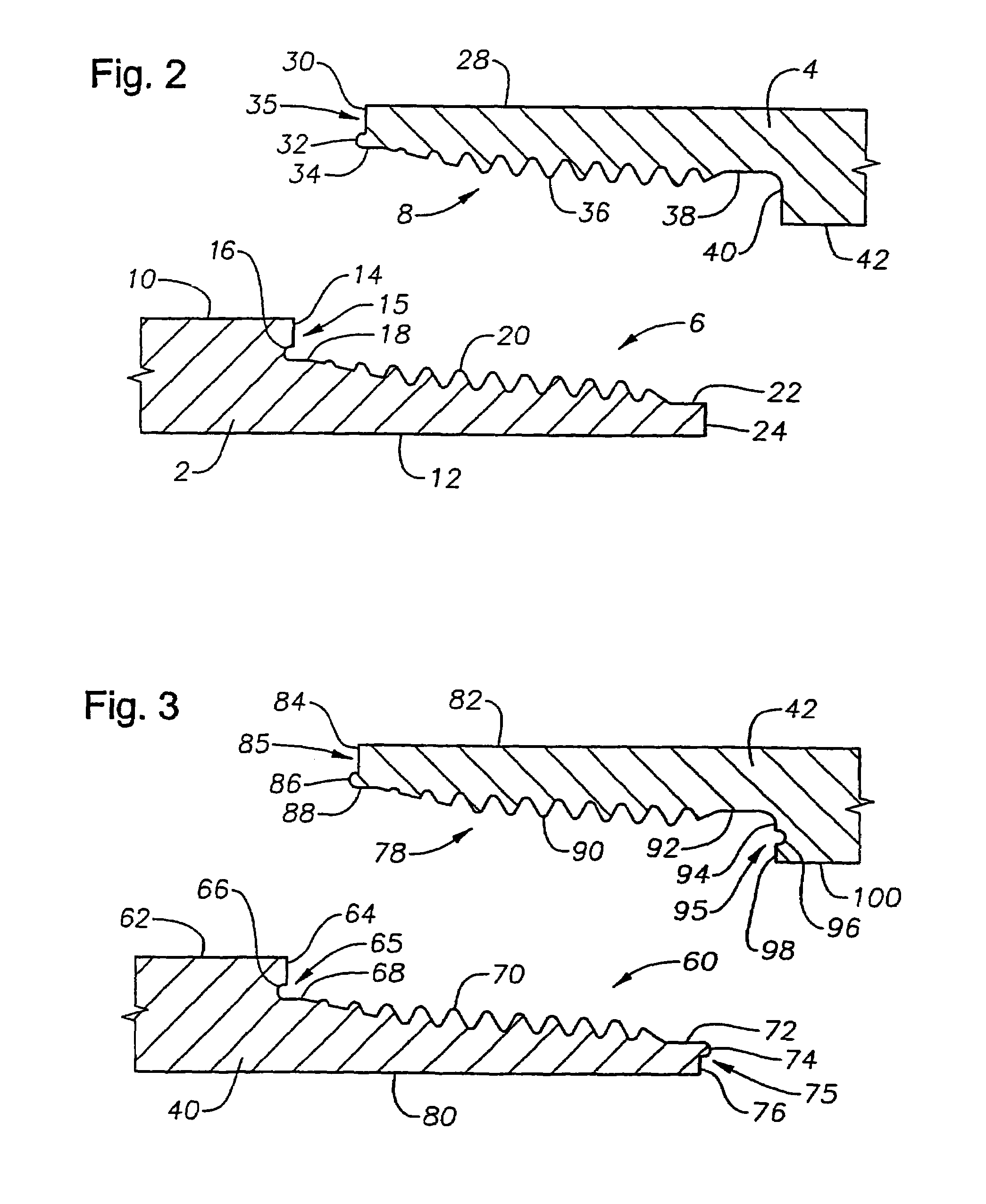Connection
a technology for connecting pipes and drill pipes, applied in the direction of hose connections, screw threaded joints, manufacturing tools, etc., can solve the problems of increasing the risk of slipping, causing structural problems, and causing excessive deformation, so as to increase the tension of the connection, prevent ramping, and increase the locking action
- Summary
- Abstract
- Description
- Claims
- Application Information
AI Technical Summary
Benefits of technology
Problems solved by technology
Method used
Image
Examples
Embodiment Construction
[0045]For a detailed description of a preferred embodiment of the invention, reference will now be made to the accompanying drawings wherein:
[0046]FIG. 1 is a cross-sectional view of a prior art connection showing flared threads;
[0047]FIG. 1A is a cross-sectional enlarged view of prior art API threads for the connection of FIG. 1;
[0048]FIG. 2 is a cross-sectional view of a first preferred embodiment of the present invention;
[0049]FIG. 3 is a cross-sectional view of a second preferred embodiment of the present invention;
[0050]FIG. 4 is a cross-sectional view of a third preferred embodiment of the present invention;
[0051]FIG. 5 is an illustrated view of three sections of a tubular string, with the individual tubular members having the connection shown in FIG. 3 of the present invention;
[0052]FIG. 6 is a cross-sectional view of the pin and box connectors of another preferred embodiment of the present invention;
[0053]FIG. 7 is a cross-sectional view of the pin and box connectors of FIG....
PUM
 Login to View More
Login to View More Abstract
Description
Claims
Application Information
 Login to View More
Login to View More - R&D
- Intellectual Property
- Life Sciences
- Materials
- Tech Scout
- Unparalleled Data Quality
- Higher Quality Content
- 60% Fewer Hallucinations
Browse by: Latest US Patents, China's latest patents, Technical Efficacy Thesaurus, Application Domain, Technology Topic, Popular Technical Reports.
© 2025 PatSnap. All rights reserved.Legal|Privacy policy|Modern Slavery Act Transparency Statement|Sitemap|About US| Contact US: help@patsnap.com



